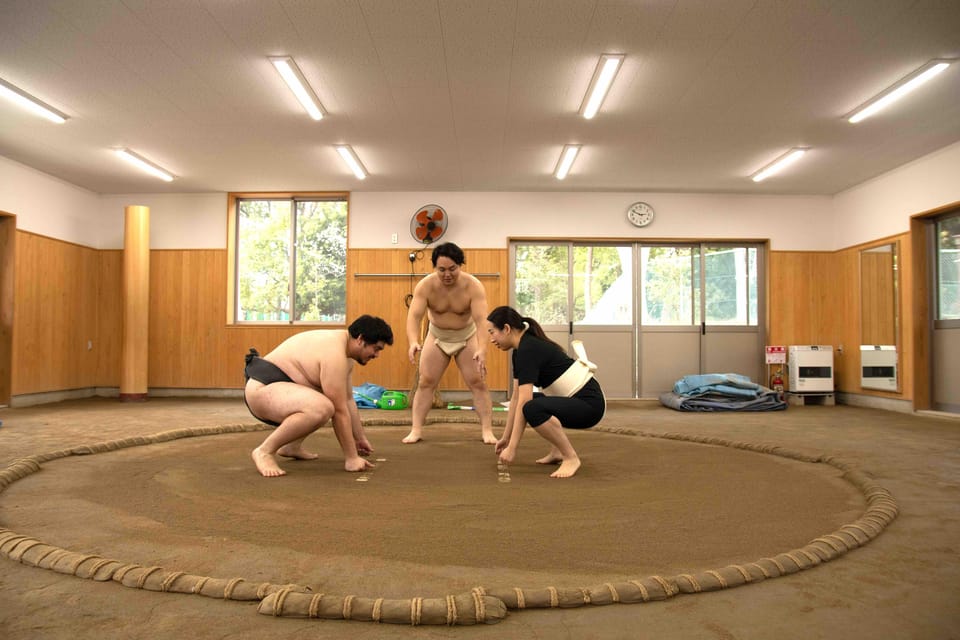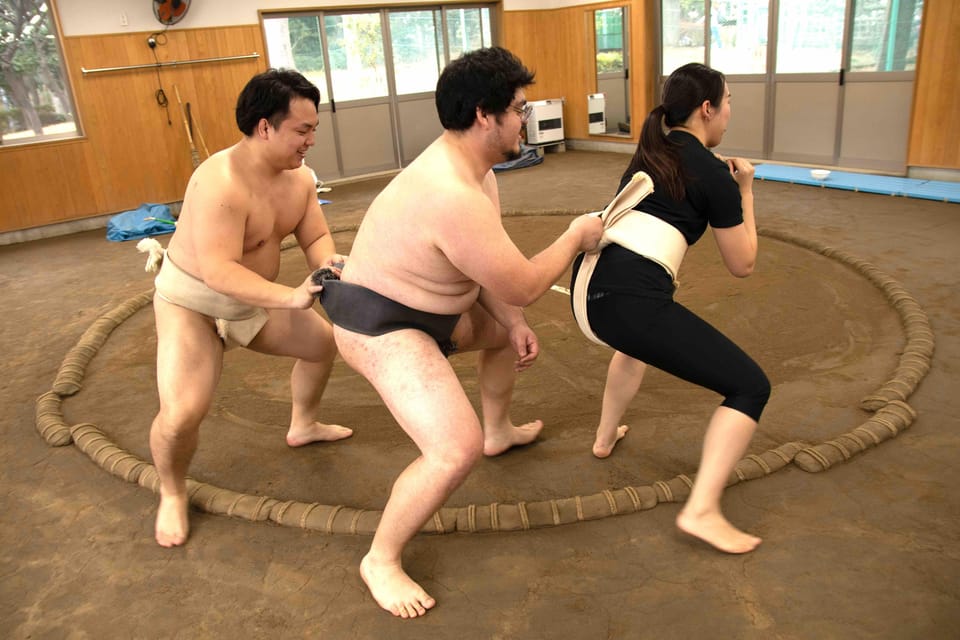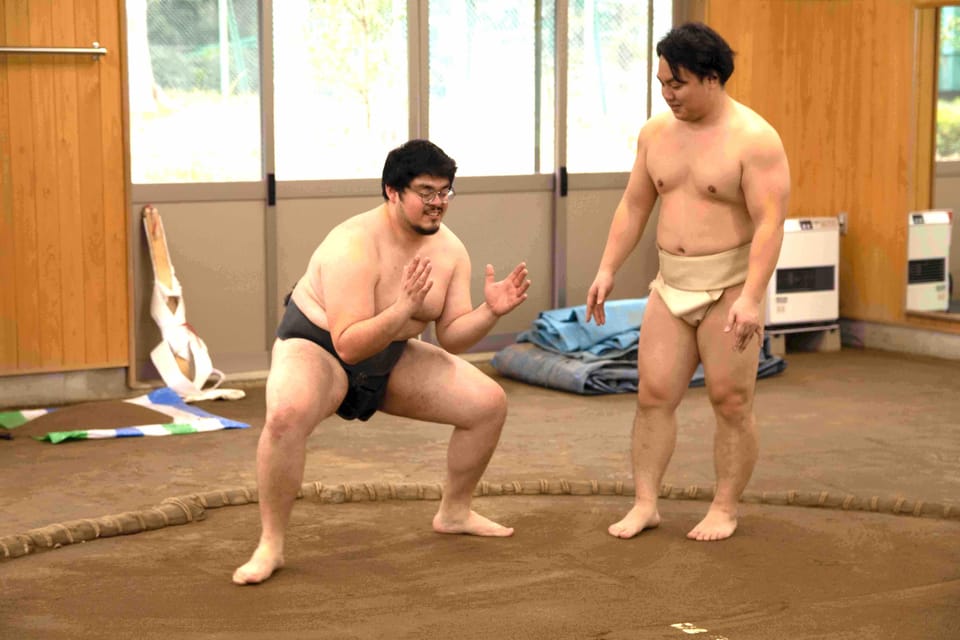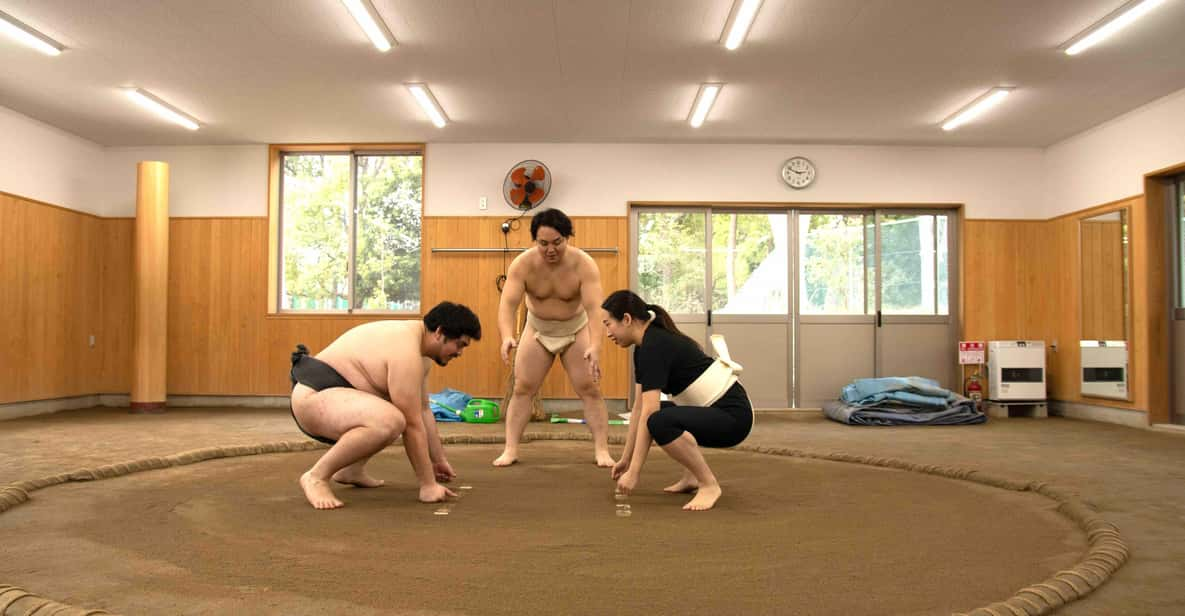Physical Address
304 North Cardinal St.
Dorchester Center, MA 02124
Physical Address
304 North Cardinal St.
Dorchester Center, MA 02124

Experience authentic sumo training in Tokyo with real wrestlers, rituals, and a clay ring—an interactive, unforgettable cultural adventure for all levels.

Tokyo’s sumo scene is world-famous, but if you’re looking for something more hands-on than just watching a tournament, the Sanctuary Authentic Grand Sumo Experience & Training offers an incredible opportunity to see and do sumo like a true rikishi (wrestler). Situated in the Kanto region, near Heiwajima Station, this 2.5-hour activity is designed to teach you the fundamentals of sumo, guided by seasoned Japanese coaches who speak both Japanese and English. For $299 per person, it promises an interactive, educational, and physically engaging glimpse into one of Japan’s most revered sports.
A note worth considering: this isn’t a typical tourist show or staged demonstration—you’ll actually try sumo yourself. That means some physical effort is involved, and beginners should be prepared to sweat and laugh along as they learn. Also, since advance booking at least two days ahead is required, spontaneous visits might not be an option, so plan your schedule accordingly.
What we really appreciate about this experience is how genuine and accessible it feels. First, the fact that you get to wear a real Mawashi (sumo belt) and wrestle on a genuine clay Dohyo (ring) makes the whole activity incredibly authentic. Second, the opportunity to learn traditional Shinto rituals and rules behind sumo adds a layer of cultural understanding that goes beyond a simple demonstration. On the flip side, a potential downside is that this experience involves some physical exertion, which might not be suitable for everyone, especially those with mobility issues or health concerns.


Starting from Heiwanomori Park Sumo-jo, this dojo is a short 10-minute walk from Heiwajima Station on the Keikyu Main Line. The meeting spot is clear—a small office at the address where you will check in, making navigation straightforward even if Tokyo’s public transportation feels maze-like. Being in a relaxed outdoor park setting, it offers a peaceful prep area before you step into the intense world of sumo.
Once you arrive, the experience kicks off with a warm welcome and a quick overview by your coach. You’ll don a Mawashi—the traditional sumo belt—and then proceed with warm-ups and stretching. This part alone is a good workout, preparing your muscles for the wrestling to come.
The coach will demonstrate fundamental sumo techniques, including:
All instructions are given bilingually, ensuring everyone understands. What’s particularly engaging is the explanation of rituals like the salt-throwing ceremony and the symbolic significance of entering the ring, giving you a taste of how sumo blends sport with Shinto tradition.
Following the demonstration, it’s time for everyone to try their hand at sumo. You’ll practice a few bouts—either against a fellow participant or the coach—adapting to your skill level. One reviewer, May, described it as being “the highlight of her trip to Tokyo,” highlighting how enjoyable and accessible this practice was for her family. She appreciated that takeshi, the guide, made everyone feel at ease and part of the action, establishing a friendly, encouraging environment.
The fact that you are wrestling on a genuine clay Dohyo makes all the difference. Few tourist experiences offer this authenticity. “It’s not only watching sumo, but doing sumo,” one enthusiastic visitor noted. This active participation breaks down the barrier of traditional spectator sports, turning it into a memorable and personal encounter.
Sumo isn’t just about physical strength; it’s steeped in Shinto customs. During the session, your coach will explain the significance of rituals like salt-throwing, stomping, and ceremonial clapping—integral parts of a sumo match that symbolize purification and respect. Such rituals have been practiced for centuries and help visitors appreciate both the sport’s physicality and spiritual depth.
After about two hours of active training, you’ll have the chance to wrestle your coach or friends in a friendly match, which often leaves participants both exhilarated and exhausted. The inclusion of real sumo gear and the chance to wrestle can be a stand-out memory that makes this tour worth every penny.
Given that no food is included, you might want to finish your session with a quick snack or drink—there’s a nearby shop at the meeting point. Also, if you wish to shower afterward (highly recommended if you get sweaty), a nearby changing room offers a quick shower for ¥100.
This experience is ideal for adventurous travelers who enjoy physical activities and want a culturally immersive activity that’s more interactive than a show. It’s perfect for families, curious couples, or solo travelers eager to get off the beaten path and try something authentic. Plus, the bilingual coaching ensures understanding and enjoyment regardless of language skills.

At $299, this experience may seem steep compared to watching a sumo match, but the value lies in the hands-on participation and the chance to learn directly from professionals. Many reviewers found it well worth the cost, highlighting the expert guides and authentic setting as major plus points. One traveler called it “probably one of the best experiences” they had in Japan, thanks in part to the knowledgeable trainers and the chance to beat their own physical limits.
While the exact group size isn’t specified, the setup suggests intimate sessions that foster interaction. This personalized approach means you’re not just a face in a crowd—you’ll get time with the coach, making the experience more engaging and memorable.

This sumo training is a rare opportunity to go beyond watching and really participate in a cultural tradition. If you’re curious about Japanese sports and rituals, enjoy active experiences, or want a hands-on story to tell friends back home, this is an ideal choice. It’s especially great for families, active travelers, or small groups of friends eager to try something genuinely different.
For those who prefer a more relaxed, observational experience, this might be too physically demanding or not the right fit. But for anyone looking to step into the ring (figuratively or literally), this tour offers an unforgettable dose of Japanese culture—and a good workout too. The combination of authentic setting, friendly guides, and meaningful engagement makes it a standout activity in Tokyo.

Do I need any prior experience to join?
No. Everyone is welcome, and no prior sumo experience is necessary. The guides will teach you everything from scratch.
Is the training physically demanding?
Yes, it involves warm-ups, stretches, and wrestling; expect to work up a sweat. Be prepared for some physical exertion.
Can I wear my own clothes?
Yes, you can wear your own clothes if you prefer, as there’s no strict dress code. However, wearing comfortable attire suitable for physical activity is recommended.
Is the gear provided?
Yes, the dojo provides a real Mawashi (sumo belt) at no extra cost.
How long in advance should I book?
It’s best to book at least 2 days before your preferred date to secure your spot.
Where exactly is the meeting point?
Meet at Heiwanomori Park Sumo-jo, 2-1 Heiwanomorikoen, Ota City, Tokyo—just a 10-minute walk from Heiwajima Station.
Are there any age restrictions?
Not explicitly, but since the activity involves physical wrestling, children should be supervised and capable of engaging physically.
What should I bring?
Bring a towel, drinks, and possibly an extra towel for showering afterward.
Is there a place to shower after the session?
Yes, a nearby shower room costs ¥100 for 5 minutes.
Can I cancel if my plans change?
Yes, you can cancel up to 24 hours in advance for a full refund through the booking platform.
This activity is a fantastic, authentic peek into sumo’s physical and spiritual worlds, perfect for travelers eager to participate actively and learn deeply. Experience the sights, sounds, and sweat of real sumo—an unforgettable highlight in Tokyo’s vibrant cultural scene.